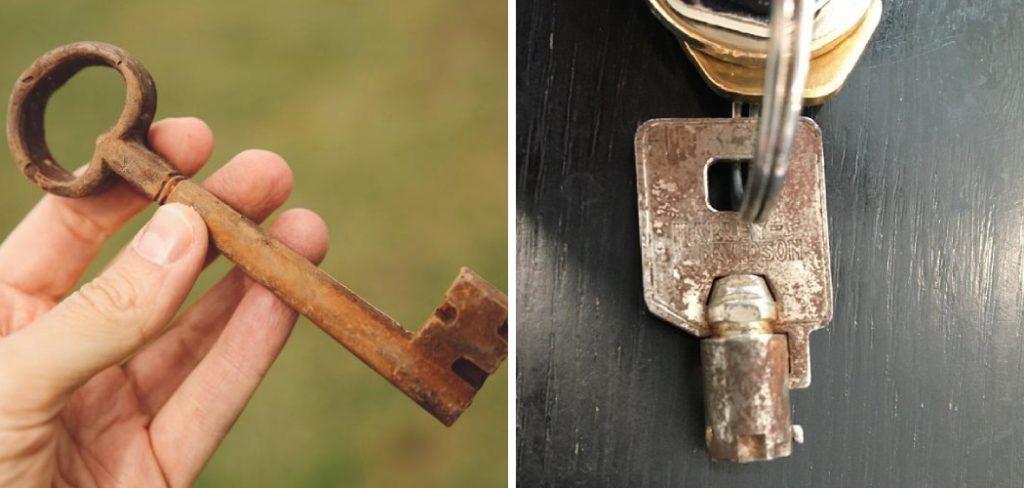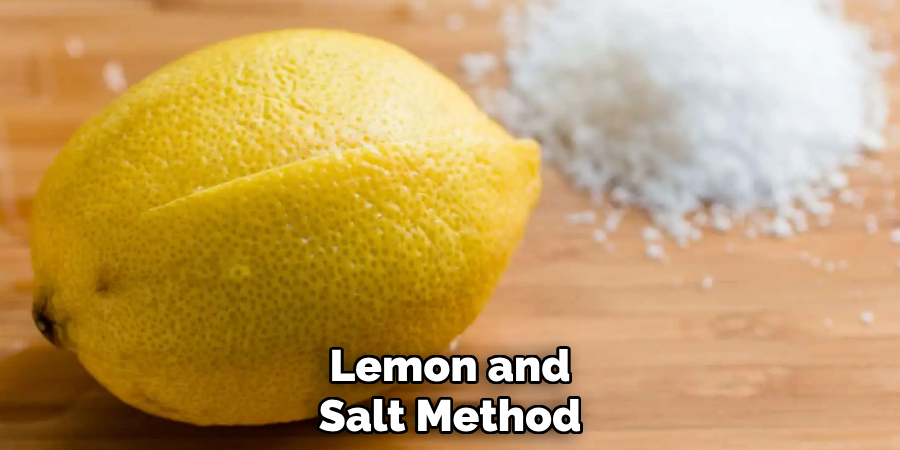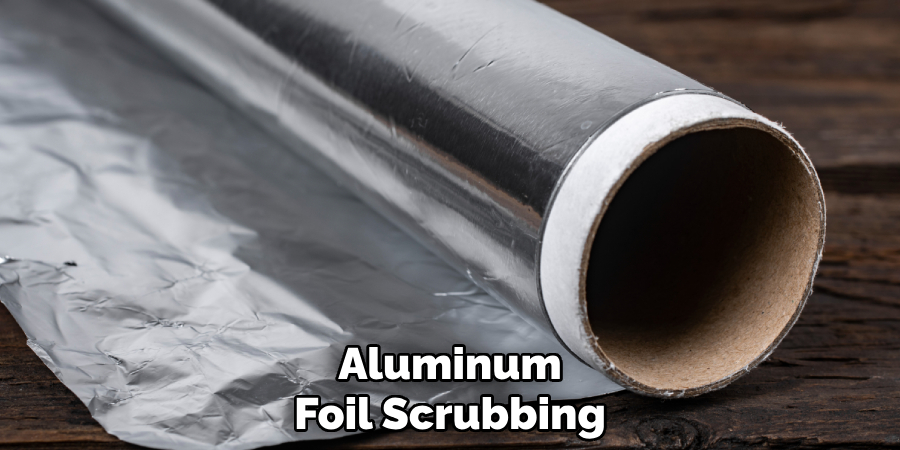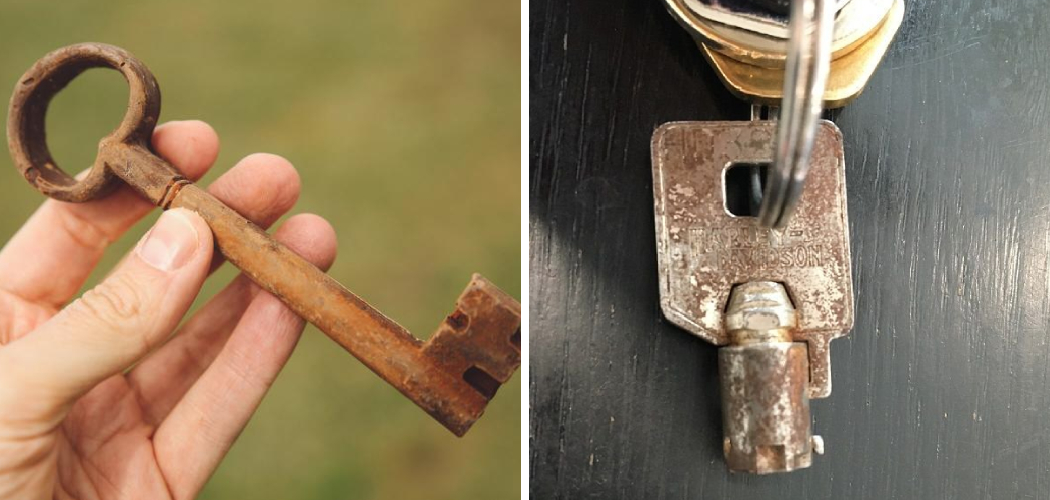Over time, keys can accumulate rust due to exposure to moisture and air. Rust not only affects the appearance of your keys but can also make them difficult to use.

Fortunately, removing rust from keys is a straightforward process that can restore their functionality and appearance. In this guide, we will explore simple and effective methods for how to clean rusty keys.
Common Causes of Key Rusting
Rust on keys is primarily caused by exposure to moisture and oxygen over time. When keys are left in humid environments, such as in damp pockets, on wet surfaces, or exposed to rain, the moisture reacts with the metal, leading to oxidation.
Additionally, storing keys near corrosive substances, such as salt or acidic chemicals, can accelerate the rusting process. Even everyday activities, like carrying keys that come into contact with sweat, can contribute to corrosion. Understanding these common causes can help prevent rust from forming on your keys in the first place.
Materials and Tools Needed
To effectively prevent or remove rust from keys, you will need the following materials and tools:
- Clean, dry cloth – For wiping moisture off the keys.
- Rubber gloves – To protect your hands while handling cleaning agents.
- White vinegar or lemon juice – Natural acids that can help break down rust.
- Baking soda – Useful for creating a paste that aids in rust removal.
- Toothbrush or small nylon brush – For scrubbing rust away from crevices and surfaces.
- Sandpaper or steel wool – For smoothing out rusted areas.
- Mineral oil or WD-40 – To prevent future rust by coating the keys with a protective layer.
- Small container – For soaking keys in cleaning solutions.
Having these materials and tools on hand will ensure you’re well-prepared to address rust effectively and maintain your keys in good condition.
10 Methods How to Clean Rusty Keys
1. White Vinegar Soak
White vinegar is one of the most common household remedies for rust removal. Submerge the rusty key in a container of white vinegar and let it soak for several hours or overnight.

The acetic acid in the vinegar will dissolve the rust. After soaking, use a brush or steel wool to scrub off the loosened rust. Rinse the key thoroughly with water and dry it completely to prevent further rusting.
2. Baking Soda Paste
Baking soda is a mild abrasive that works well for removing rust from keys. Mix baking soda with a small amount of water to create a thick paste. Apply the paste to the rusty areas and let it sit for 15–30 minutes.
Use a toothbrush or scrubbing pad to scrub off the rust. Rinse the key with water and dry it completely before storing it.
3. Lemon and Salt Method
Lemon and salt create a natural rust-removing solution. Sprinkle salt over the rusty key, then squeeze fresh lemon juice over it. Let the key sit for a few hours, allowing the acidity of the lemon to break down the rust. Scrub the key with a brush, rinse it with water, and dry it thoroughly to prevent further oxidation.
4. Coca-Cola Soak
Coca-Cola contains phosphoric acid, which is effective in dissolving rust. Submerge the key in a bowl of Coca-Cola and let it soak for a few hours. Once the rust has loosened, scrub the key with a brush, rinse it with water, and dry it completely. This method is easy and works well for mild rust buildup.

5. Aluminum Foil Scrubbing
Aluminum foil is an excellent tool for removing rust from metal objects. Dip a crumpled piece of aluminum foil in water or vinegar and use it to rub the rusty areas of the key. The chemical reaction between the aluminum and the rust helps lift it off the key’s surface. Rinse the key and dry it thoroughly when finished.
6. Steel Wool or Wire Brush Method
For heavily rusted keys, using steel wool or a wire brush is an effective method. Simply scrub the rusty key with medium or fine-grade steel wool or a wire brush until the rust is removed. This method is quick but requires some effort. After cleaning, rinse the key and dry it to prevent further rusting.
7. Rust Removal with WD-40
WD-40 is a lubricant that also works as a rust remover. Spray a generous amount of WD-40 on the rusty key and let it sit for a few minutes. Use a brush or steel wool to scrub the key, removing the rust. Wipe the key with a clean cloth, and it should look significantly better. WD-40 also leaves a protective layer to prevent future rusting.
8. Oxalic Acid Solution
Oxalic acid is a powerful rust remover found in many commercial rust removal products. To use it, mix a small amount of oxalic acid with water, ensuring you wear gloves for safety.
Submerge the rusty key in the solution for 20–30 minutes. Once the rust has dissolved, remove the key, rinse it with water, and dry it thoroughly. Be cautious, as oxalic acid is strong and requires proper handling.
9. Electrolysis Rust Removal
Electrolysis is a highly effective way to remove rust from metal objects. Fill a plastic container with water and add baking soda or washing soda to create an electrolyte solution. Connect a battery charger to a sacrificial piece of metal and to the rusty key, ensuring the positive terminal is attached to the sacrificial metal.
Turn on the charger, and the rust will slowly transfer from the key to the sacrificial metal. After the process is complete, remove the key, rinse it, and dry it thoroughly.

10. Using Commercial Rust Removers
Several commercial rust removers are designed specifically to dissolve rust without damaging the metal. Products like Evapo-Rust, CLR, or naval jelly can be used according to the manufacturer’s instructions.
Typically, the key is submerged in the solution for a set period, then scrubbed clean. Afterward, rinse the key with water and dry it completely.
Troubleshooting Common Issues
Even after following the steps to remove rust, you may encounter some challenges. Below are common issues and how to address them:
Stubborn Rust That Won’t Come Off
If the rust persists, repeat the cleaning process or try a combination of methods. For example, soak the key in vinegar overnight and scrub it again with a steel wool pad or a brush.
Discolored Metal After Cleaning
Sometimes, cleaning solutions can leave a discoloration on the metal. Use a metal polish or a fine abrasive pad to restore the key’s original shine.
Residue from Commercial Rust Removers
If there is a sticky residue left by a commercial product, clean the key with soapy water and rinse thoroughly. Make sure to dry it completely to prevent new rust.
Recurring Rust
To prevent rust from returning, immediately dry the key after exposure to moisture. Additionally, consider applying a thin layer of oil or a rust-preventive product for long-term protection.
Safety Considerations
When dealing with rust removal or prevention, it is essential to prioritize safety. Always wear gloves to protect your hands from harsh cleaning agents or from sharp, corroded edges on the key. If using chemical rust removers, ensure you are working in a well-ventilated area to avoid inhaling fumes.
Keep these products out of reach of children and pets. For tasks involving tools such as steel wool or wire brushes, exercise caution to prevent accidental injuries. By following these safety practices, you can effectively maintain your key without compromising your well-being.
When to Contact a Professional
While many key maintenance tasks can be managed at home, there are situations where it is best to seek the assistance of a professional locksmith. If a key is severely rusted, bent, or has deep cracks, attempting to fix it yourself could worsen the damage or render it unusable.
Additionally, if the key gets stuck in a lock and cannot be gently removed, professional expertise is necessary to avoid causing harm to the lock mechanism. For antique or specialized keys, contacting a professional ensures that appropriate methods are used to maintain their integrity. Locksmiths are equipped with tools and knowledge to handle complex issues, saving you time and reducing the risk of errors.

Common Mistakes to Avoid
When dealing with key or lock-related issues, it’s important to steer clear of common mistakes that can complicate the situation. One major mistake is applying excessive force when a key is stuck, as this can break the key and damage the lock.
Another common error is using unsuitable tools or makeshift items to try to manipulate the lock, which often leads to further damage. Avoid using lubricants like oil or grease without proper guidance, as they might attract dirt and worsen the problem. Lastly, procrastinating when experiencing lock issues can escalate the problem over time, making a simple fix much more complicated and costly.
Conclusion
Cleaning rusty keys is an easy and effective way to restore them to their original condition. By using household items like vinegar, baking soda, and lemon, or more advanced methods like electrolysis and commercial rust removers, you can effectively eliminate rust and extend the lifespan of your keys.
Always remember to dry your keys thoroughly and store them in a dry place to prevent future rust buildup. Now that you know how to clean rusty keys, try it yourself today and feel good about completing such a big DIY job!

